- Administrator
- Albums and Singles
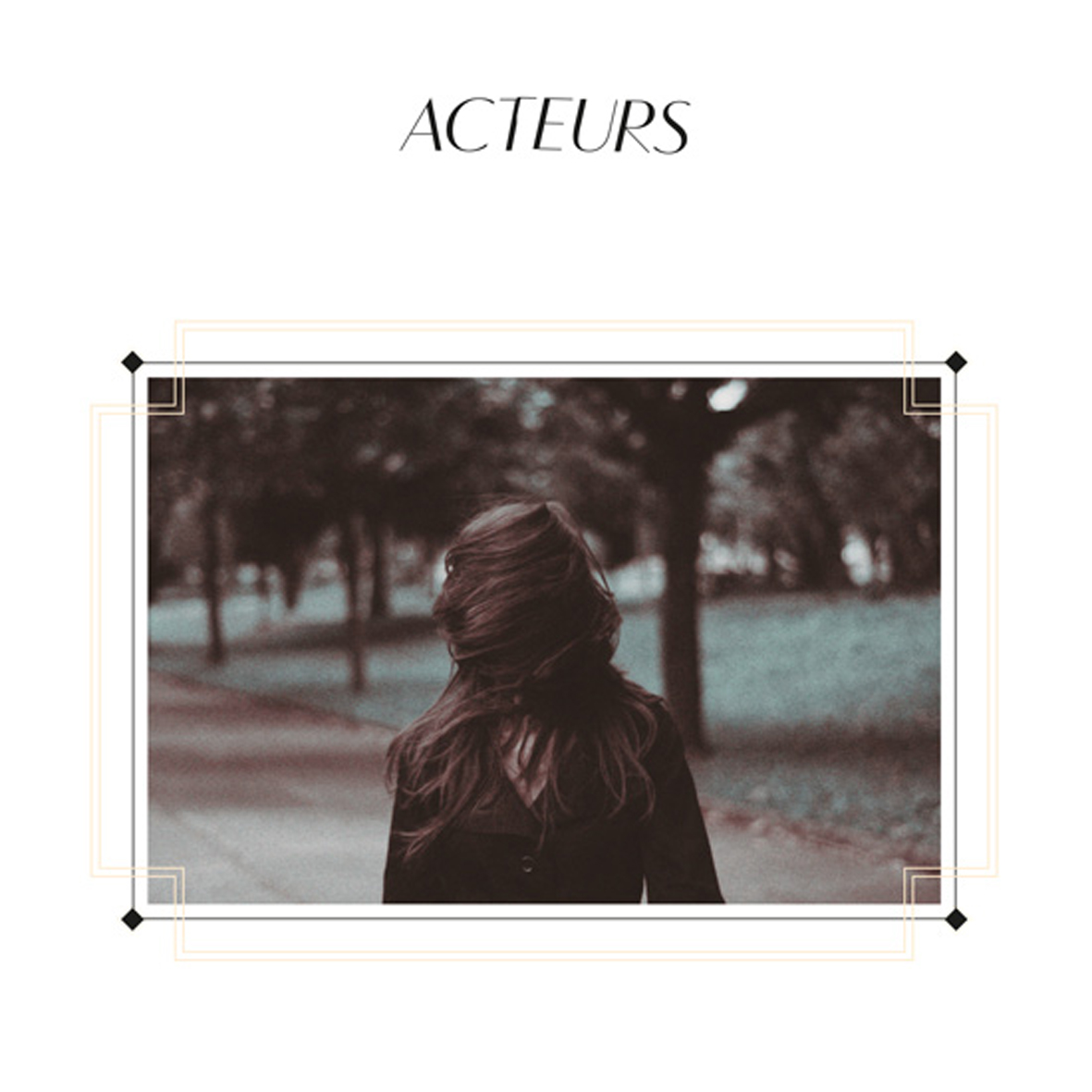 This is the debut release by Disappears' Brian Case and White/Light's Jeremy Lemos and it is a hugely promising one, deftly mixing together propulsive post-punk, electronic noise, industrial rhythms, and Case's wonderfully deadpan drawl to create something thoroughly bad-ass and charismatic.  Unfortunately, the duo's initial creative flurry seems to have yielded very few real songs, making this "mini-album" feel an awful lot like an awesome single with a handful of less-inspired bonus tracks tacked on.
This is the debut release by Disappears' Brian Case and White/Light's Jeremy Lemos and it is a hugely promising one, deftly mixing together propulsive post-punk, electronic noise, industrial rhythms, and Case's wonderfully deadpan drawl to create something thoroughly bad-ass and charismatic.  Unfortunately, the duo's initial creative flurry seems to have yielded very few real songs, making this "mini-album" feel an awful lot like an awesome single with a handful of less-inspired bonus tracks tacked on.
It is rare to see a band put their best foot quite as nakedly as Acteurs do on this release, as it opens with its greatest moment and seems to grow incrementally less compelling with each song that follows.  Fortunately, that opening song ("Cloud Generating") is an absolutely stellar one.  In fact, it fleetingly made me think that I had just discovered one of my new favorite bands.  I also felt quite similarly about the slower, sexier follow-up ("Lowow").  Very few albums start as strongly as this one.
That initial euphoria diminished a bit with subsequent listens, however, as the duo's flaws gradually became a bit more apparent.  Still, Acteurs' aesthetic definitely hits the mark for me when Case and Lemos manage to write actual songs, which is something they do all too rarely.  In fact, they arguably only do it just once.  "Lowow" reprises everything great about its predecessor, again offering up a throbbing electronic beat, dissonant electronic flourishes, dub-influenced echo effects, obsessive repetition, and Case's wonderfully world-weary and debauched-sounding vocals, but loses a bit of its luster when it becomes clear that the lyrics consist entirely of "low low low low low" over and over again.  I still love it–I just wish Case had tried a bit harder (clearing his throat at the beginning was a nice touch though).
After that, the duo ill-advisedly dispense almost entirely with both vocals and beats, bringing them back only for the much more abstract "Golden Rabbit."  While the alternately swelling, pulsing, and throbbing soundscapes that remain are certainly likable in their own right, the decision to include so many of them leaves me completely baffled.  For one, Case's vocals are essential to the distinctiveness and personality of the band.  Secondly (and more importantly), I cannot begin to comprehend why Acteurs would devote 2/3 of their debut album to industrial-damaged ambiance after hitting upon such a beautifully executed, attention-grabbing blend of Gang of Four, Throbbing Gristle, and GVSB.  As enjoyable as some of the abstract pieces are, it is very hard to see them as anything other than filler after the duo had unleashed such a striking and near-perfect one-two punch of an opening.
I am also a bit mystified by Case's cryptic/seemingly nonsensical lyrics.  I understand that he is (successfully) going for both minimalism and attitude, but I feel like he could have done much better than "low low low low low" or "golden rabbits, lucky habits" on a release the features roughly four lines in its entirety.  Still, while perplexing artistic decisions abound, they do not eclipse the fact that Acteurs have definitely hit upon something quite wonderful.  "Cloud Generating" and "Lowow" are both great songs–hopefully there will someday be more coming, as I would much rather see this album as the uneven birth of a killer new band than as an exasperating glimpse of what might have been.
 
Read More
- Administrator
- Albums and Singles
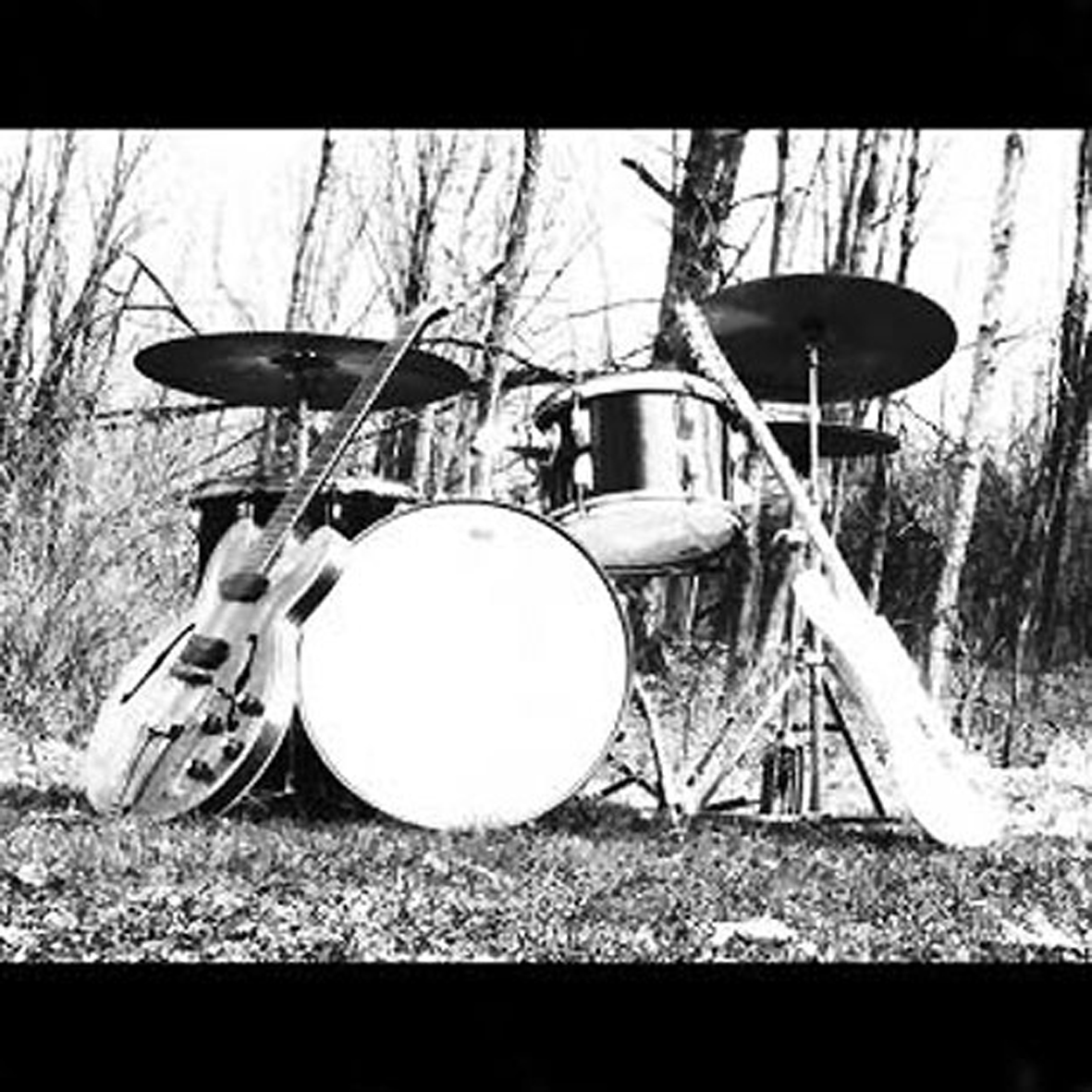 This unusual split is basically just an excuse to release a handful of lost songs from around the time of Dead C's Eusa Kills album (1989), but that is just fine by me (particularly since I like Rangda too).  It is an inspired pairing for a number of reasons, but the primary one is that the two bands could not possibly sound more wildly different: the Rangda half sounds like a trio of skilled musicians intuitively improvising together, while the Dead C half is an endearingly shambling mess.  Despite that yawning stylistic chasm (and a two decade span between the sessions), both bands offer at least one song that beautifully highlights what they do best.
This unusual split is basically just an excuse to release a handful of lost songs from around the time of Dead C's Eusa Kills album (1989), but that is just fine by me (particularly since I like Rangda too).  It is an inspired pairing for a number of reasons, but the primary one is that the two bands could not possibly sound more wildly different: the Rangda half sounds like a trio of skilled musicians intuitively improvising together, while the Dead C half is an endearingly shambling mess.  Despite that yawning stylistic chasm (and a two decade span between the sessions), both bands offer at least one song that beautifully highlights what they do best.
The whole idea of "lost" Dead C songs is very amusing to me, as this split makes it very clear that the line between an actual Dead C song and a recording of them aimlessly messing around in rehearsal is probably a very blurry one indeed.  That is not to say that these four songs are not likable, but things like hooks, structure, melody, fidelity, and tightness have never been the trio's greatest talents.  Rather, they seem to have been put on earth solely to sound gloriously wrong at all times and to seem extremely cool while doing it.  Both "Eusa Kills" and "Tomorrow" are ideal testaments to that unique brand of genius, as the former is basically an avalanche of over-the-top distortion and half-mumbled vocals propelled by a skeletal drum machine beat, while the latter unleashed some impressively ugly and anti-virtuosic guitar squall over a jazzy shuffle.  The remaining two pieces, however, fall a bit short, amounting to little more than prickly lo-fi ambiance and something that sounds like a decontextualized live guitar solo shorn of the surrounding song.
For their side, Rangda offer up just two pieces: the lengthy "Gracilaria" and the shorter "Sancticallist," one of which highlights everything wrong with the trio and one which highlights everything right.  Sadly, the longer one is the misfire, as Sir Richard Bishop and Ben Chasny do a whole lot of sleepy noodling before eventually erupting into a woefully unearned crescendo.  Chris Corsano gamely tries to inject some excitement into the proceedings by bringing his usual intensity, but he has virtually nothing to work with–it just sounds like two boring guitar solos over the top of a good drum solo rather than anything coherent.  Curiously, "Sancticallist" is not overtly all that different, but everything somehow locks together beautifully into a condensed, simmering, and oft-explosive whole.  It is remarkable just how dramatic the difference between improvisations can be with no clear reason, as the magic is either there or it is not, regardless of the strength of the underlying motifs: "Sancticallist" is simply great, while "Gracilaria" is clearly not.
Naturally, there is no getting around the fact that this is a very minor release within both bands' discographies, but that does not diminish it at all, as it does not pretend to be anything more.  Essentially, Ba Da Bing located a handful of Dead C songs that no one has heard, then decided to make them available in a stylish and inspired way (a limited vinyl-only release with striking cover art and a similarly cool band on the flipside).  As such, this is kind of a perfect release: casual fans can safely pass it by knowing that there is nothing truly essential or revelatory to be found, while more devout fans will undoubtedly be very pleased with both the music and the physical object.
Read More
- Administrator
- Albums and Singles
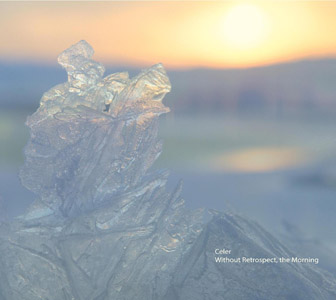
 
The hushed sound of "Dry and Disconsolate" hides glistening rising and falling tones, comfortably sparse and airy.The extremely distant hum of "Variorum of Hierophany" is reminiscent of Bernhard Günter in its approach, but even without a distinct melody it is less dry and clinical than his work, which continues as it blends into "A Landscape Once Uniformly White".
The two closing pieces are the only ones that have a more dynamic sound, not requiring a meditative approach to listening while still remaining understated.Long puts glassy organs up front on "Distance and Mortality,"resonating and sustaining throughout the entire piece. It shifts, changes, and evolves frequently to stay fascinating."With Some Effort, the Sunset" follows suit, with church bell like echoes leading off the 13 minute long piece.It is beautiful and delicate, with an icy but light and floating drift to it, fading in and out of focus.
Because of my own self-sustained abstinence from following Celer's exponentially growing discography too closely, I cannot speak as to how this work fits in with the most recent releases.On its own, Without Retrospect does stand out from the other albums I have heard with its quiet, faint nature.Rather than resembling other ambient projects, its extreme minimalism makes the soft tones and melodies that appear all the more powerful, resulting in a bare but beautiful snapshot of icy lands and frigid air.
samples:
 
Read More
- Administrator
- Albums and Singles
![]() Lee Bartow's Navicon Torture Technologies project came to a lavish end with the double album The Gospels of the Gash in 2009, after which he adopted the Theologian moniker and continued on. A special limited edition was released alongside, with an additional two discs of exclusive remixes and collaborations with a slew of artists both well known and just getting established. Your Suffering Will Be Legendary reproduces those additional discs, which function nicely on their own, thankfully not relegated to be forgotten bonus material.
Lee Bartow's Navicon Torture Technologies project came to a lavish end with the double album The Gospels of the Gash in 2009, after which he adopted the Theologian moniker and continued on. A special limited edition was released alongside, with an additional two discs of exclusive remixes and collaborations with a slew of artists both well known and just getting established. Your Suffering Will Be Legendary reproduces those additional discs, which function nicely on their own, thankfully not relegated to be forgotten bonus material.
Malignant Records, Handmade Birds
At two discs and about two and a half hours in length, Your Suffering is an intimidating work.Bartow's art has always sat in a genreless space that touched upon all forms of harsh electronics without ever fitting into one specific style, and this material is no different.While there are exceptions, the first disc stays more in the traditional NTT realm of raw, harsh electronics and bleak walls of sound, with the second one branching out a bit more to work with rhythms and more conventional structures.
Pieces like "Everything I Have Is Yours" (with Aun) and "An Exercise in Pain" (with Autoclav 1.1) keep things understated and subtle, the former using repetitious hollow echoes as a base for lush synth pads, while the latter works in a crumbling, thin marching-band like rhythm, moving into film score territory.The long "I Won't Survive in a World Without You" (with Covet) also goes for cinematic aspirations, beginning with simple static and simple piano melodies, an unpleasant cut-up voice sample sets a dark tone that is later replaced by bombastic string synth leads and high drama.
On disc two, "Gumrot (Decaying Face Edit)" (with Fragment King) immediately grabbed me with its synthetic dubby basslines and skittering percussion that eventually launches full bore into a more dissonant take on the 1990s ambient dub sound.Similarly, "Pillars of Flesh" (with Eidulon) has a dark opening that eventually gets paired with heavily distorted vocals and a stiff drum machine loop that makes for a welcome throwback to the first two Scorn albums.
All of the material is quite good, with the only real shortcomings to be found with the pieces that just blend more into the background rather than standing on their own individual sounds."In the Folds of the Flesh" (with Kristoffer Nyströms Orkester) heavily utilizes musical loops make for a distinct sense of repetition, but the amount of change and evolution is not enough to keep it engaging."Sonnenaufgang" (with Troum) uses shrill noise and cavernous reverbs are done well enough, but simply does not stand out amongst the more unique pieces.
samples:
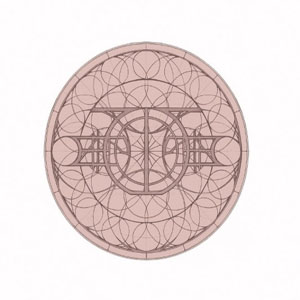
Theologian is Bartow's post-NTT project and although it sonically covers much of the same terrain, it has a different, less overly dark sensibility to it."Fighting for Notion" begins deep, resonating low and bursts eventually get paired with a processed, tinny rhythm that nicely moves into harsher noise territory but ends on some more restrained ambient synth patterns.
"All I See is You" begins more in the realm of overdriven harsh electronics before pulling back to let some heavy synth layers move forward, met with some distorted, grimy drum loops that could have been lifted off of an old Skinny Puppy album."Finding Comfort in Overwhelming Negativity" is less overtly rhythmic, but keeps a structure via a heavily distorted synth pattern that fights off the occasional bit of melody.With the buried, distant vocals, and overall structure, it comes across as somewhat more repetitious, but in an effective, composed manner.
Having not heard the full package where Your Suffering first appeared, hearing it on its own makes me quite glad that it was issued separately, because it simply was too strong of material to not be available.All of the artists who collaborated fitting in nicely with one another, with the new projects occasionally outshining some of the old veterans.At the same time, his new material as Theologian has a different, almost more matured and nuanced sound to it, emphasizing the best part of NTT's past, making both of these releases extremely satisfying, if somewhat oppressive to listen to in one setting
samples:
 
Read More
- Administrator
- Albums and Singles
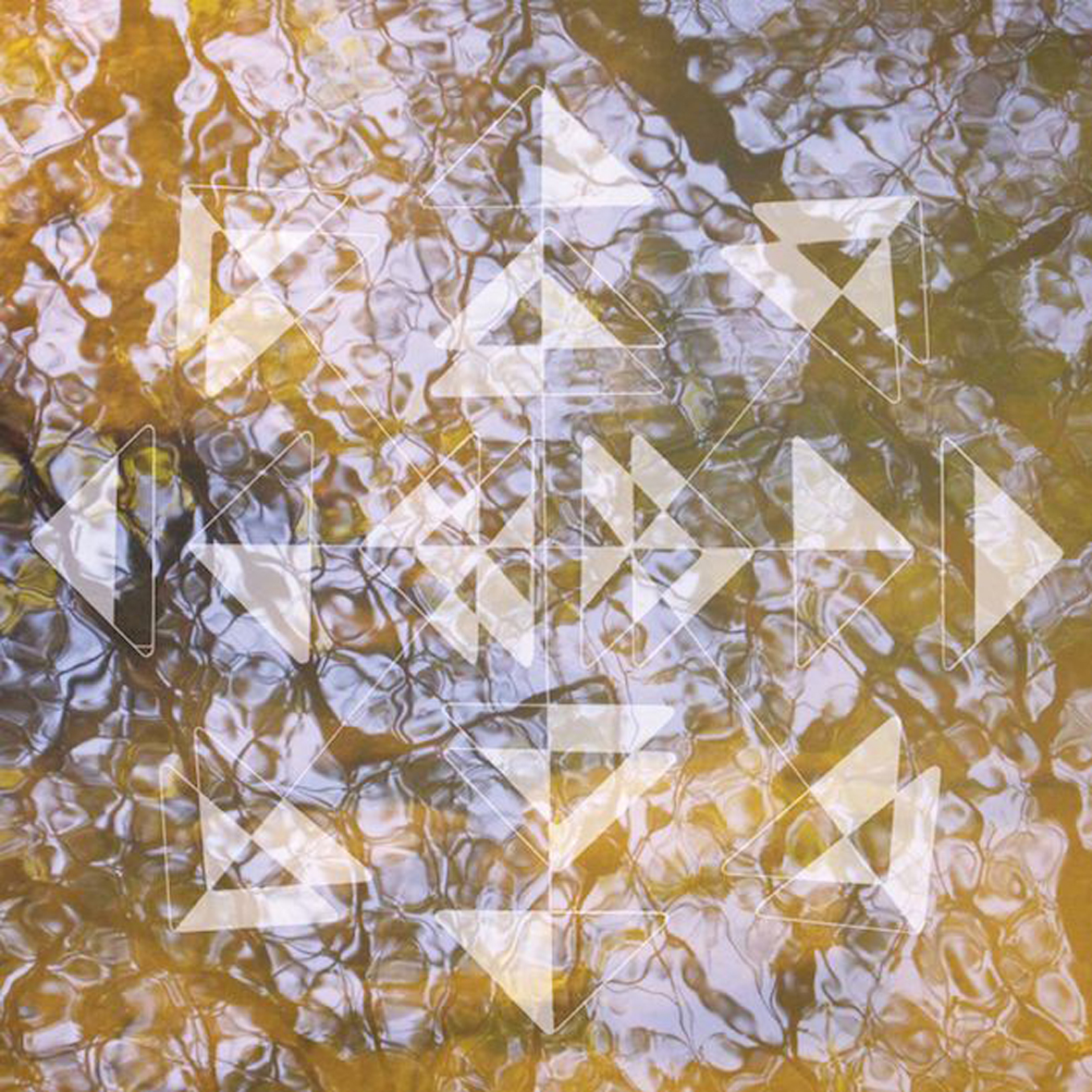 While I could not possibly be more weary of synthesizer albums at this point, one still comes along every now and then that miraculously breaches my wall of indifference.  This aptly titled effort is one such album, as Holtkamp has unleashed a burbling, radiant, and psychedelic tour de force.  The sheer candy-colored brightness of Koen's vision still remains a bit of an obstacle for me (as it was earlier this year with Mountain's Centralia), but Liquid Light Forms' dazzling and dense vibrancy is sometimes enough to transcend my normal aesthetic preferences.
While I could not possibly be more weary of synthesizer albums at this point, one still comes along every now and then that miraculously breaches my wall of indifference.  This aptly titled effort is one such album, as Holtkamp has unleashed a burbling, radiant, and psychedelic tour de force.  The sheer candy-colored brightness of Koen's vision still remains a bit of an obstacle for me (as it was earlier this year with Mountain's Centralia), but Liquid Light Forms' dazzling and dense vibrancy is sometimes enough to transcend my normal aesthetic preferences.
Holtkamp has a long history as an eccentric electro-acoustic omnivore, but he takes an uncharacteristically purist stance for this release: all three pieces were created almost entirely from modular synthesizers and sequencers.  Some inconspicuous guitar creeps into the album's closer ("Hudson Static"), but overall emphasis is quite squarely upon gloopy, colorful artificiality.  Normally, that is the sort of thing I tend to run from, but it is evident from the very first minute of "Battenkill" that Holtkamp is no mere dilettante indulging an analog fetish.
It opens with a marginally promising throbbing drone, but that proves to be merely a backdrop for a flurry of gurgling and sputtering electronic warmth.  It brings to mind a bubbling underground lake of molten rock, but in an unearthly, beautiful way rather than a menacing way.  In fact, if "Battenkill" had just stopped and held its ground there, it would easily be one of the most perfect pieces of music that I have heard in a long time.  Koen had other plans though, which is where Liquid Light Forms gets somewhat thorny for me: he is just as likely to be brutally cheery as he is to be great and he is often restless enough to be both within the same song.
As a result, the last ten minutes of "Battenkill" are devoted to over-caffeinated, major key throbbing and sputtering space music that maintains too rapid a pace to be enjoyable.  I suppose it is complex and unpredictable enough to be impressive instrumentally, but I am not the target demographic for such feats.  It settles down enough to win me back again by the outro, but the damage has already been done.
"Hoosick" offers up a similar rainbow of Day-Glo synth psychedelia, but its lazy pace and lush, sun-dappled central motif make it quite likable and it becomes increasingly so as it evolves into something a bit more twinkling and melancholy.  It is an entirely successful piece, but the lack of any derailment is balanced out by the fact that it never quite flirts with greatness either.  It is merely good.
The album winds down with "Hudson Static," a ten-minute piece recorded live at Brooklyn club Shea Stadium.  Thankfully, it has a darker, heavier tone than its predecessors.  The sound quality is not quite on the level of the studio pieces, but the added grit and hiss work in Koen's favor: it is basically just a thick, ominous drone monolith buffeted with space-y flanges and furious twinkling, so pristine production would probably have only served to neuter it a bit.  Holtkamp happily stays on course for the duration, which ends the proceedings on a strong note.
After several listens, my feelings about Liquid Light Forms remain somewhat complicated, as both my longstanding hostility towards "happy" music and the inherent limitations of a pure modular synth album come into play.  While it sometimes veers dangerously close to "music strictly for other musicians to appreciate" territory, it is hard to imagine a better album emerging from such a constrained palette (especially a conspicuously river-themed one).  More importantly, the first half of "Battenkill" was transcendent enough to reel in a genuinely skeptical and near-hostile listener in myself, which is no small accomplishment.  If that momentum had held, this would have been quite an amazing album indeed.  Instead, it is simply a great, multilayered synthesizer performance that teases at the potential for something more, which is just fine too.
 
Read More
- Administrator
- Albums and Singles
Originally released on double CD by the amazing Students of Decay in 2008, The Snowbringer Cult is a grandiose quadruple album which combines Mehdi Ameziane’s and Solange Gularte’s solo projects, TwinSisterMoon and Isengrind, on disc one and their collaboration as Natural Snow Buildings on disc two. Ba Da Bing is reissuing the original double CD, along with vinyl versions for each of the three releases, all with interconnecting artwork.
In all, The Snowbringer Cult presents the most varied and nuanced sense of what fills the Natural Snow Buildings cosmos, and is one of the greatest projects by an experimental band in recent years.
Gularte's Isengrind centers on hypnotic soundscapes, floating woodwinds and chanted dirges. The airy sounds intermix and collide, sometimes building ominously, sometimes crashing together. It sounds gloriously like an imagined soundtrack to a banned '70s Italian horror film.
Ameziane's TwinSisterMoon showcases the folk end of his sound. Often graced with his soft countertenor voice, the songs are like a sweet respite amidst the menace of minor keys. Delicate acoustic guitar passages break for shifting drones before leading to ornate instrumentals.
The Natural Snow Buildings material on this double-album brings about an alternately luminous and perilous finish to the journey started by the Isengrind and TwinSisterMoon releases. Here, The Snowbringer Cult reaches climactic points of intensity, following all the tension from the with grand payoffs.
More information here.

Read More
- Administrator
- Albums and Singles
Two of the greatest bands of the present day, each composed of two guitarists and a drummer. Every member's name carries its own legendary status. Richard Bishop. Ben Chasny. Chris Corsano. Michael Morley. Bruce Russell. Robbie Yeats. Fabricated empires have risen and been destroyed by the vast output of any one of these guys. Finally, they come together on one release: a split LP between two supergroups.
The Dead C's tracks are a gem of a find. The band uncovered recordings nestled in the back corner of their archives that they completely forgot existed. These tracks were under consideration for their seminal album Eusa Kills. The loose majesty found on that album comes to the fore here, with a group finding their wings right as they are set aflame.
Rangda recorded their two compositions at Russian Recording in Bloomington, Indiana. Everything that brings these musicians together uncoils and commands. Beats of silence underscore tangents that lead back to main themes and out again. It’s as though the years and years of playing under their collective belts has culminated in these glorious moments.
More information here.

Read More
- Administrator
- Albums and Singles
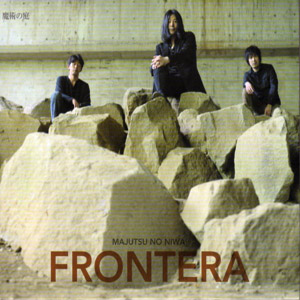
Made up of the members of psych rock group Overhang Party (whose discography has been recently been compiled by Important Records), the trio lead by guitarist/vocalist Rinji Fukuoka captures much of that band’s sound and intensity in these two new albums and deluxe reissue. It also clearly shows the changes and development of their sound, using the past as a reference point but not being mired in it.
Frontera is a reissue of the band’s 2009 album as a lavish, heavy weight double LP that suits the music well, with the gatefold format capturing the classy excess of many a 70s double album.Most of the songs here balance between order and chaos, such as the enjoyably dissonant distortion but rhythmic backing to "Afunruparo" and the hard rock blast and wah laden solos of "Majutsu no Niwa (Magikal Garden)."The distorted, cyclic sound of "Night Cruise" feels like an appropriately respectful nod to Loop, a sound they will return to later.
It would be impossible to simply peg this album as another modern take on space rock though, from the rapid, almost Ramones like surge of "Turn to Flames" and the blues/folk inspired 1960s throwback of "Journey to the End of the Night (Voyage Au Bout de la Nuit)".The final piece, the sprawling 22 minute "La Vena" features artist Sachiko on added electronics, and makes for a gloriously sprawling piece of noise, occasionally flirting with traditional structure but just as quickly turning away from it.
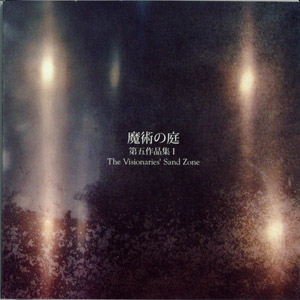
Their newest work is two separate and very different albums that almost sound like two different bands.I must admit to favoring Part I-The Visionaries' Sand Zone the most, with its more abstract feel overall, but heavily based upon a fuzz heavy guitar sound that again channels Loop without sounding like an also ran.
"Desolate Seashore" and "Spring Storms" opt for a majestic sound, working the fuzzed out guitars into a clearly structured and organized dramatic composition.This sound is paired with the likes of "The Call of Thanatos" and "Tick Tack", both of which turn up the tempo and sound a bit looser, almost sloppier, but intentionally so, like some of Boris' best unhinged moments.
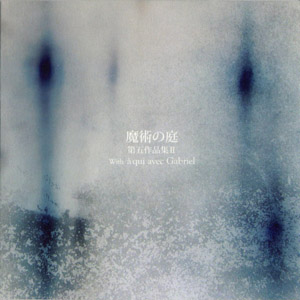
The companion album, Part II:With à qui avec Gabriel, takes a drastic turn into a more folk oriented, stripped down approach that leans more into acoustic guitars and accordion.Compared to their other material, it is far more skeletal and understated.On "Wolf, Scorpion, Earth Fang" and "A Gust of Wind" the sound ends up a bit more complex, with the accordion intertwining strangely, but quite well, with the mildly distorted electric guitar.
"Whither" is the only song that sounds more in league with the Part I album:even though the accordion makes for an odd inclusion, the whole thing comes together as more of an uptempo rock sound."Marseille" also stands out, although here it has a more bluesy lurch in comparison to the rest.
Admittedly, the Part II album does not quite resonate as much with me.I can definitely appreciate it as a well-written and structured album, but the folk type sound has never really been my thing, especially when paired with the more raucous space rock sound they are otherwise known for is so great.When they are more focusing on the loud guitars and rapid rhythms though, it comes together quite brilliantly.
samples:
 
Read More
- Administrator
- Albums and Singles
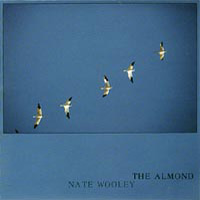 Good luck pinning down New York's Nate Wooley. He's an Oregon-born trumpeter with solo, duo, and quintet projects that deal in free improvisation, extended techniques, feedback, noise, and jazz. He has played with Yoshi Wada, John Zorn, and Anthony Braxton, held residencies at ISSUE Project Room and Cafe OTO; he curates the Database of Recorded American Music online and is editor-in-chief for its quarterly Sound American journal. For The Almond Wooley flies solo, using carefully looped and layered tones to sculpt a beautiful and imposing 72-minute composition for trumpet and voice.
Good luck pinning down New York's Nate Wooley. He's an Oregon-born trumpeter with solo, duo, and quintet projects that deal in free improvisation, extended techniques, feedback, noise, and jazz. He has played with Yoshi Wada, John Zorn, and Anthony Braxton, held residencies at ISSUE Project Room and Cafe OTO; he curates the Database of Recorded American Music online and is editor-in-chief for its quarterly Sound American journal. For The Almond Wooley flies solo, using carefully looped and layered tones to sculpt a beautiful and imposing 72-minute composition for trumpet and voice.
At low volumes or in passing, The Almond might sound like a drone record, and I guess that's accurate to the extent that it is a long, unbroken piece of music composed of sustained tones. But played at louder volumes, as recommended in the liner notes, or given more attention, it sounds less like a drone and more like the audio equivalent of a bas-relief. Each of the looping pitches Wooley uses to build The Almond are made up of several recordings utilizing different tunings, mutes, mics, and environments. By adding and subtracting elements to and from these loops, he transforms apparently smooth and simple tones into layered things with shifting textures, contrasting vibratos, and undulating hues. The bright, relatively smooth grain of his trumpet breaks into grooves, crevices, crests, and furrows, and is joined by other similarly built sounds, which flash and shiver against each other. Nate carefully mixes these, generating harmonies, melodies, textures, and throbbing rhythms in a constant state of flux.
The construction is ingenious and easy to admire, but so are the results. The brassy pitches shimmer beautifully against the finer patterns that cut along its surface. Sections expand and contract as naturally as if they were breathing, but also swell to roiling crescendos. By midway through the record, the very shape of the trumpet comes through in the music: the fleshy buzz of the mouthpiece, the sonorous ring of the bell, even the mechanics of the valves sing. A massive low end, which I cannot identify as a trumpet at all, submerges the brighter sounds in shadow and fills out the thinner places with some muscle. When it drops out, the music is unmoored and floats away lighter than air. It doesn't stop there though. Wooley continues to work and transform his material, shaping it into newer configurations, some of which are quite beautiful. At 72 minutes long, this is still just an excerpt of a longer piece, but I would be happy to follow along for another 72 minutes should Wooley ever think a longer version worth releasing.
samples:
 
Read More
- Administrator
- Albums and Singles
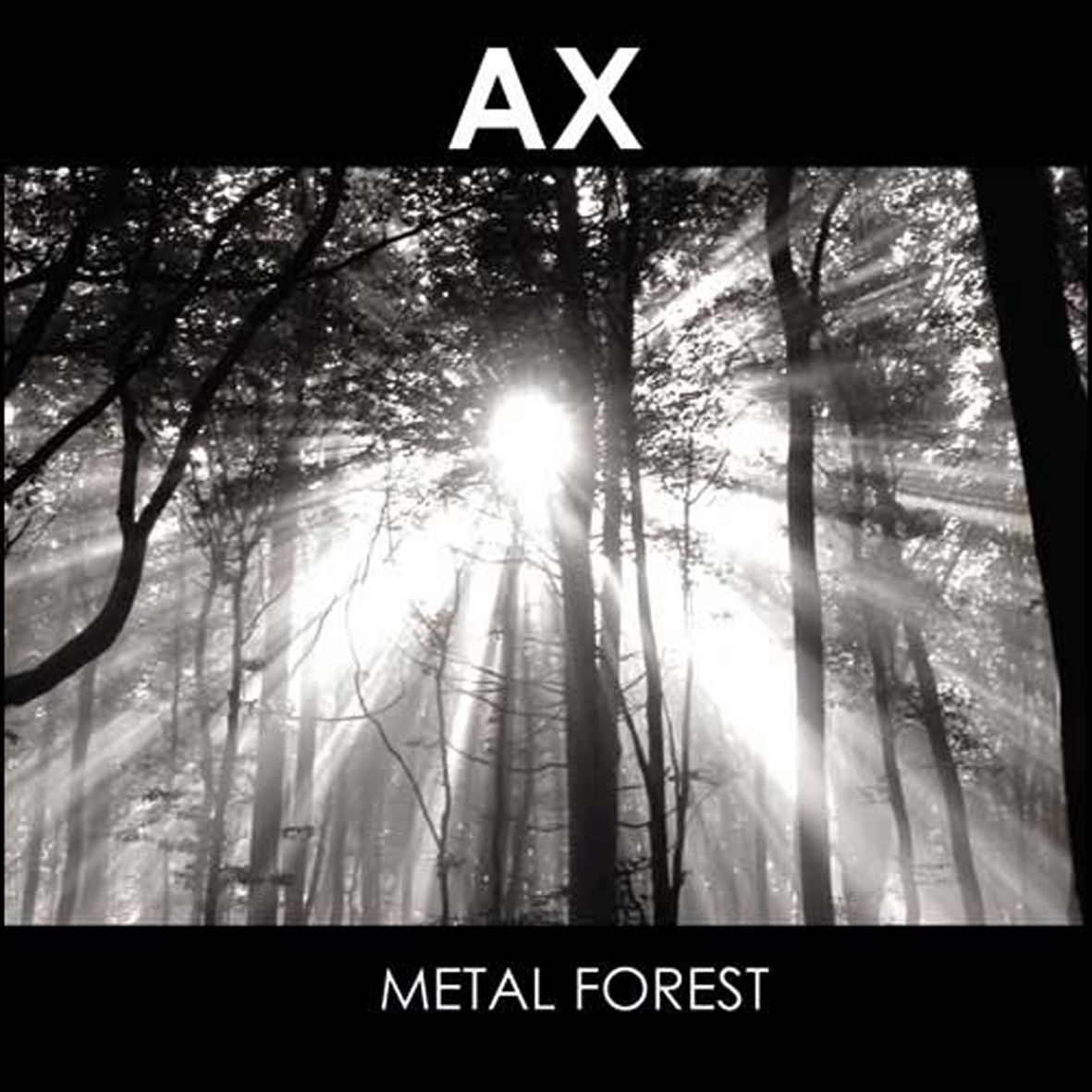 Anthony DiFranco has been a stalwart of the UK noise scene under many guises since back in the Broken Flag days.  In recent years, he has mainly constrained his activities to Ramleh, but he spent the late '80s and early '90s quite actively, recording as Ethnic Acid, JFK, and as an early member of Skullflower.  He also made several gnarled and ugly guitar noise albums as AX, which have long been woefully unavailable.  Metal Forest happily remedies that inequity, cramming all of AX's highlights into one snarling and truly brutal CD.
Anthony DiFranco has been a stalwart of the UK noise scene under many guises since back in the Broken Flag days.  In recent years, he has mainly constrained his activities to Ramleh, but he spent the late '80s and early '90s quite actively, recording as Ethnic Acid, JFK, and as an early member of Skullflower.  He also made several gnarled and ugly guitar noise albums as AX, which have long been woefully unavailable.  Metal Forest happily remedies that inequity, cramming all of AX's highlights into one snarling and truly brutal CD.
This compilation collects nine songs originally released between 1994 and 1997 on the defunct Freek Records label.  Of the three albums cannibalized for Metal Forest (Nova Feedback, Ax II, and Astronomy), only AX's debut LP (Nova Feedback) has been included in its entirety, which is a wise move in many ways.  For one, it seems like DiFranco was particularly inspired early on, covering a lot of stylistic ground and doing so in very visceral fashion–he made quite a definitive statement right out of the gate.  Secondly, the first two AX releases were previously only available on vinyl, so it was much more useful to digitize and disseminate them than AX's later work.  Finally, due to its harsh nature, Metal Forest is already quite exhausting at around an hour–if anything, it could benefit from being less comprehensive.
Given DiFranco's Ramleh/Skullflower pedigree, it is not particularly surprising that AX's strain of noise is often more indebted to rock than electronics, though the line can get quite blurry at times.  What did surprise me is how varied Anthony's attack was within his stylistic constraints: it is not entirely fair to say that noise has become rigidly codified in the years since Nova Feedback's release, but most artists nowadays tend to stake out very narrow terrain for themselves and stay there until they have exhausted every possible variation.  While the six pieces culled from Nova Feedback are primarily built upon bulldozing, heavily distorted bass and dissonant guitar squall, each song is still fairly unique (despite sounding uniformly massive and overdriven).  Also, several pieces sound remarkably ahead of their time, as "Theme One" anticipates the current Harsh Noise Wall genre and "Heavy Fluid" sounds like the missing link between Power Electronics and Sunn o))).
The two pieces taken from 1995's Ax II mini-album are perhaps even better than those from the debut, however.  DiFranco's scope seems to have narrowed dramatically into harsh electronic noise/power electronics territory during that period, but both sections are brutally, grindingly heavy from start to finish (in fact, they probably sound almost exactly like being run over by a tank while trying to saw through it with a chain saw).  Given that intensity, the sole piece from 1997's Astronomy cannot help but be a step in another direction–DiFranco had already taken his inclination towards ugly, violent, roiling chaos as far as it could go.  As a result, "Kortex" is more like crushing, buzzing glacier of heavy that replaces fury with sheer relentless massiveness.  It is quite good in its own right (I loved the undulating sub bass), but it is not nearly as apocalyptic and attention-grabbing as some of AX's earlier triumphs.
The sole flaws with Metal Forest stem primarily from the difficulties inherent in condensing AX's entire discography into one album, as the balance between sequencing and comprehensiveness is quite tricky and required compromise in both regards.  For example, it is perplexing that the third (and final) section of AX II is omitted, given that the two sections that were included probably represent AX's absolute zenith.  Also, 1994's "Cluster" seems a bit contextually out of place, sounding like an extended intro to an early Soundgarden song (they were arguably a cool band then).
Despite that, Cold Spring probably did as fine a job as could be expected, juggling chronology and style to make Metal Forest as listenable as possible.  That still makes for an exhausting and overwhelming dose, I am afraid, but that is entirely due to the sheer force of the material (and there almost nothing included that I would have cut). The bottom line is that Metal Forest is a crucial piece of noise archaeology, as DiFranco made some of the heaviest, most nightmarishly uncompromising music of the '90s and it deserves the wider recognition that this release will hopefully give it.  Consequently, I am more than willing to meet it halfway and intelligently limit my listening for maximum impact.
Samples:
 
Read More
- Administrator
- Albums and Singles
Published to coincide with the release of Wire’s excellent new album Change Becomes Us, Read & Burn is the first serious, in-depth appraisal of one of the most influential British bands to emerge during the punk era.
If Wire were briefly a punk band, however, it was largely by historical accident. Their story is one of constant remaking and remodeling, one that stubbornly resists reduction to a single identity. Read & Burn traces Wire's diverse output from 1977 to the present and does justice to their restlessly inventive body of work by developing a sustained critical account of their shifting approaches. It combines analysis and interpretation with perspective drawn from extensive interviews with past and present members of the group, as well as producers, collaborators, and associates.
Out March 15, 2013 on Jawbone Press.
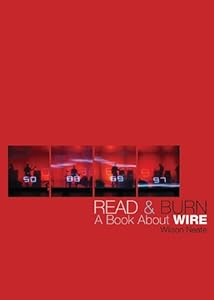
Read More